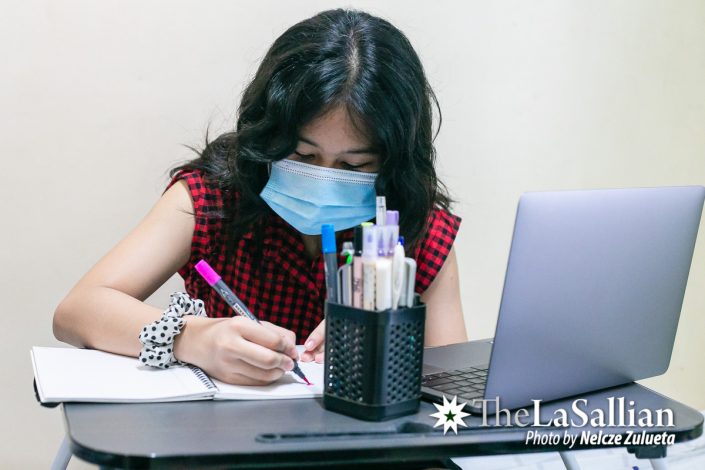For nearly two years, Filipino children have had to endure being cooped up at home due to lockdown restrictions. Though limited face-to-face classes were approved by the IATF last month, millions of children are still confined to learning virtually. This is an unprecedented shift in the way children develop, and scientists are still trying to understand the extent of its impact.
Younger generations are undergoing some of their most formative years during this pandemic. And if we are to mitigate the potential damage while harnessing the advantages it brings, for the sake of our future and theirs, it is imperative to know how the lockdown will affect their growing minds.

The risk of connections, or lack thereof
Now that children spend most of their time in front of a screen—be it for classes or simply for entertainment—people want to know if excessive screen time has negative effects on attention.
Samuel Bautista, a lecturer from the Department of Psychology, cautions that excessive screen time may be detrimental to children based on research, “WHO recommends no screen time for two-year-olds and below, and no more than one hour for three-year-olds to four-year-olds.”
Another pitfall of excessive screen time is that it takes away time from socialization. Of course, social interaction is important for children. For infants, Bautista says that their primary social interactions are focused on their caregivers. The quality of these interactions matters as well, especially among infants, where he says a secure attachment with their parents or caregivers is associated with positive outcomes later in life.
Meanwhile, for older children, social interaction that can aid in developing skills such as conflict resolution and cooperation, in addition to the molding of self-concepts and self-esteem, is essential. The need to belong to a friend group is particularly pronounced in teenagers. If left unguided, virtual communities may even pose a risk to older children and teenagers who have just started figuring out their identities.
Dr. Karen Sacdalan, a registered psychologist, adds, “[Virtual communities] have their own boon or bane. For a teenager or a child who’s still exploring this new dynamic, it can be quite risky. If parents, like myself, are working and preoccupied with household needs…it’s left to chance for a child to be guided on that aspect.”
Honest conversations
While in an ideal situation, parents are fully able to guide their children; the fact is, most parents do not have the luxury of monitoring their screen time and usage 24/7. To this, Bautista advises that “communicating openly, spending time together consistently, and discussing feelings honestly” are helpful strategies that family members can take advantage of in order to assist the social development of children.
“Screen time is more unavoidable presently, but if you watch together, this can minimize the negative effects and encourage positive development,” he recommends.
As a mother herself, Sacdalan stresses the importance of listening to kids, “Sometimes children can be right as well. I mean, you have to listen to them.” She explains that while parents cannot be perfect, they can always review our priorities. “I know we, [parents], are busy. But busyness can also mean laziness or being irresponsible. We abuse this ‘busyness’ because we also fail to see the value of what really matters most in life,” she espouses.

Wins in the spectrum
Surprisingly, virtual learning amid the pandemic has proved to be a source of relief for children with autism spectrum disorder (ASD). Sacdalan, who has a child with ASD, claims that many special needs children tend to thrive in the pandemic, “They don’t need to present themselves and comply with the requirements of social exposures or interaction. They were bullied less.”
She remarks that there is much to learn as these children intentionally observe interactions from a screen, “Even if they’re not having good eye contact, all the rest of their senses are at maximum level. You’re not just quite aware of that. But it works that way for them.”
Furthermore, children with ASD now have the luxury of a stable routine where they know what to expect. Bautista states that while online learning does not offer children with ASD the same opportunities to practice their social skills, “they enjoy interaction through computer screens as they occur in a safe environment.”
A better tomorrow
While people continue the debate between resuming face-to-face classes or avoiding the further proliferation of COVID-19, it is important to consider that there are more variables at play. For many children, the dangers at home outweigh those posed by the COVID-19 pandemic. But there are also others who benefit from this setup.
Perhaps we should not only consider how and when we will resume face-to-face classes. We should also take into account the ways in which we can foster an environment where children can flourish.
At the end of the interview, Sacdalan asserts that one way or another, we should contribute to advancing the quality of life. “I’d like to look at [the] pandemic as an eye-opener of many life lessons that we are to realize so that we can really build that better tomorrow,” she ends.
